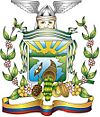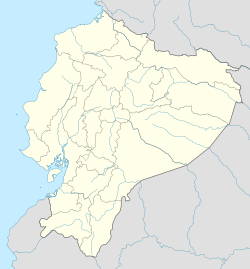Balzar, Ecuador facts for kids
Quick facts for kids
Balzar
|
||
|---|---|---|
|
City
|
||
|
||
| Country | ||
| Province | Guayas | |
| Canton | Balzar Canton | |
| Area | ||
| • City | 10.65 km2 (4.11 sq mi) | |
| Population | ||
| • City | 32,744 | |
| • Density | 3,074.6/km2 (7,963/sq mi) | |
Balzar is a lively city in Ecuador. It is located in the northern part of Guayas Province, right by the Daule River. This city is the main town of Balzar Canton.
Balzar is known as an important farming area in northern Guayas. Many people here work in farming. In 2022, about 32,744 people lived in Balzar.
History
Balzar became an official canton on September 26, 1903. This means it became its own important administrative area.
In 1964, a man named Carl Vilhelm Dencker-Rasmussen came to Balzar. He was an engineer from Denmark who knew a lot about organic farming. He bought a farm called Hacienda Karen, which was located along the Daule River.
Carl Dencker-Rasmussen tried growing different crops like rubber, tobacco, and rice. He was very successful with rice. He dug special channels for the rice fields, just like he had seen in Malaysia.
His successful rice crops were very important for the region. Before this, rice had to be brought in from other places. Rice soon became a major food source for the people of Balzar. It joined traditional foods like sweet potatoes and maize.
Geography and Economy
The most important river in Balzar is the Daule River. This river is used for transporting goods and people. It helps connect Balzar to other places.
Agriculture is the main activity in Balzar. Farmers grow many important products. The top crops include rice, coffee, and tobacco. These products are very important for the local economy.
Balzar is also famous for a very tall tree. This tree stands at the end of the city's main road. It is a well-known landmark throughout Ecuador.
See also
 In Spanish: Balzar para niños
In Spanish: Balzar para niños



